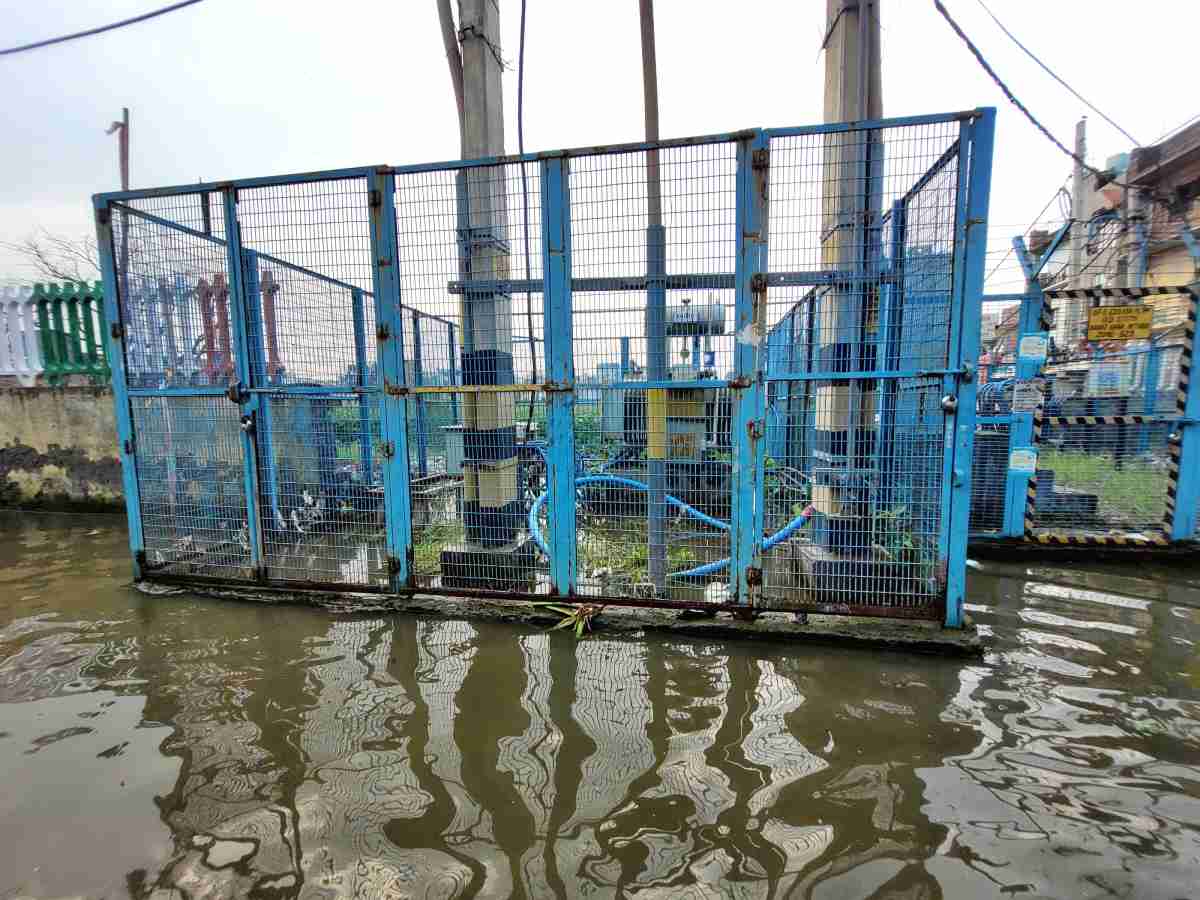
A waterlogged transformer which is a possible health hazard for the residents here
Delhi: As monsoon rains continue to wreak havoc across the national capital, an unsettling sight greets those venturing toward Nithari village in Kirari. Amid the flooded streets, an active transformer stands partially submerged in murky water. For anyone passing by, the thought of what could happen next is enough to send a shiver down the spine.
Transformers like this one are not limited to a single spot in the North West Delhi village; they are scattered throughout the area. This has turned the entire region into a hazardous zone, with residents of the Kirari assembly constituency living in constant fear of death.
Live wires lie across the streets, and the sewer system struggles to cope. As a result, within just a month, the constituency has seen four deaths due to electrocution, three of which occurred in a single week.
Reportedly, around 25 people have died due to waterlogging this year. However, the police reported that only there were deaths due to electrocution. “It keeps happening every year. There’s nothing that can be done,” said a senior police officer.
On Independence Day this year, 15 August, 40-year-old Lallan Mishra from Prem Nagar was electrocuted while plugging a water motor into a socket.
His wife explained that the local MLA had given him the water motor to address the flooding in their street. “My husband was trying to fix the inundation issue in front of our house. In the afternoon, while he was pumping water out, the neighbours called me. When I arrived, I found him lying lifeless in a pool of water, with a red wire wrapped around him.” She has filed an FIR but is still awaiting justice.
In a tragic twist of fate, within a week, another 40-year-old man, Sanjay, was electrocuted at his home in the same area. Police officials reported that water had entered his residence, and he was likely electrocuted when it came into contact with the power circuit.
A family member noted that such incidents are not uncommon in the area. “Four to five people die like this every year, and it has become normal for us. It’s heart-breaking that it has now happened in our family. We complained to government officials to fix the drainage, but nothing was done,” she said.
A resident of Nithari village recounted the horrors of the situation, recalling how a student at the local government co-educational school was electrocuted during the rains last year.
Also Read: Why north-west Delhi’s Kirari has become a nightmare for residents
“A live wire came into contact with the water, conducting electricity to the gate. The girl unknowingly touched the gate, which electrocuted her. She was stuck to it like glue,” said a school official who wished to remain anonymous.
Notably, a report by the Central Ground Water Authority (CGWA) revealed that groundwater samples analysed in Delhi show the second highest instances of high electrical conductivity (salinity) among states, surpassed only by Rajasthan.
Out of 95 samples collected in 2022-2023, the national capital recorded 24 that exceeded the permissible threshold of 3,000 microseconds per centimetre (µS/cm) conductivity limit.
Rival leagues trigger players’ suspensions and a legal battle in Indian golf, for now
Former Delhi CM Kejriwal criticises Centre, Delhi govt over worsening air pollution, alleges AQI manipulation
Delhi Police raids Nangloi unit producing fake engine oil, seizes over Rs 1 crore worth…
Mukesh Sharma reimagines digital components as living matter in his solo exhibition ‘Decoding Digital DNA’
Nine accused were arrested in coordinated raids as police uncovered organised networks supplying mule bank…
Nearly 1.57 lakh PUC challans issued in two months as Delhi steps up GRAP enforcement…